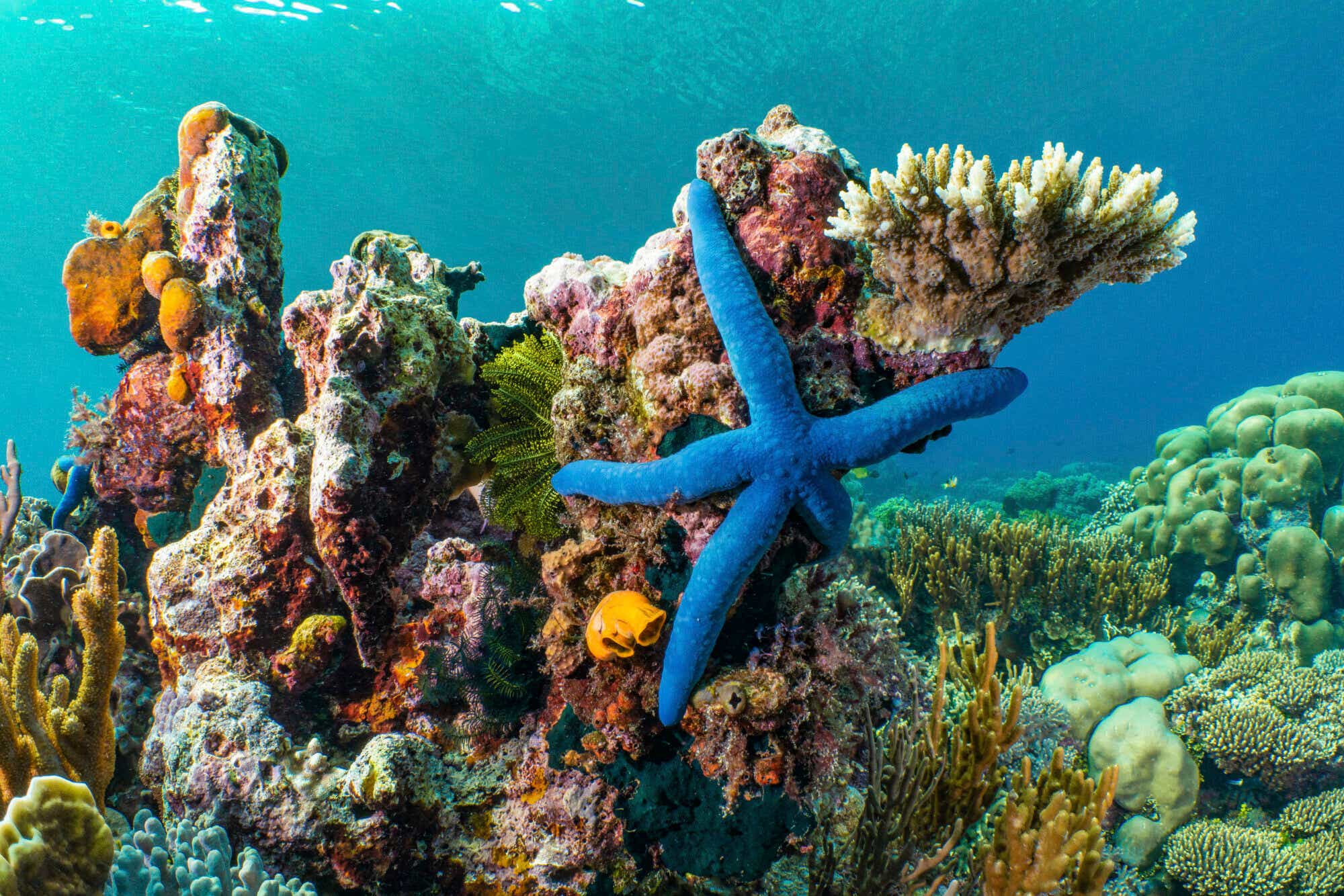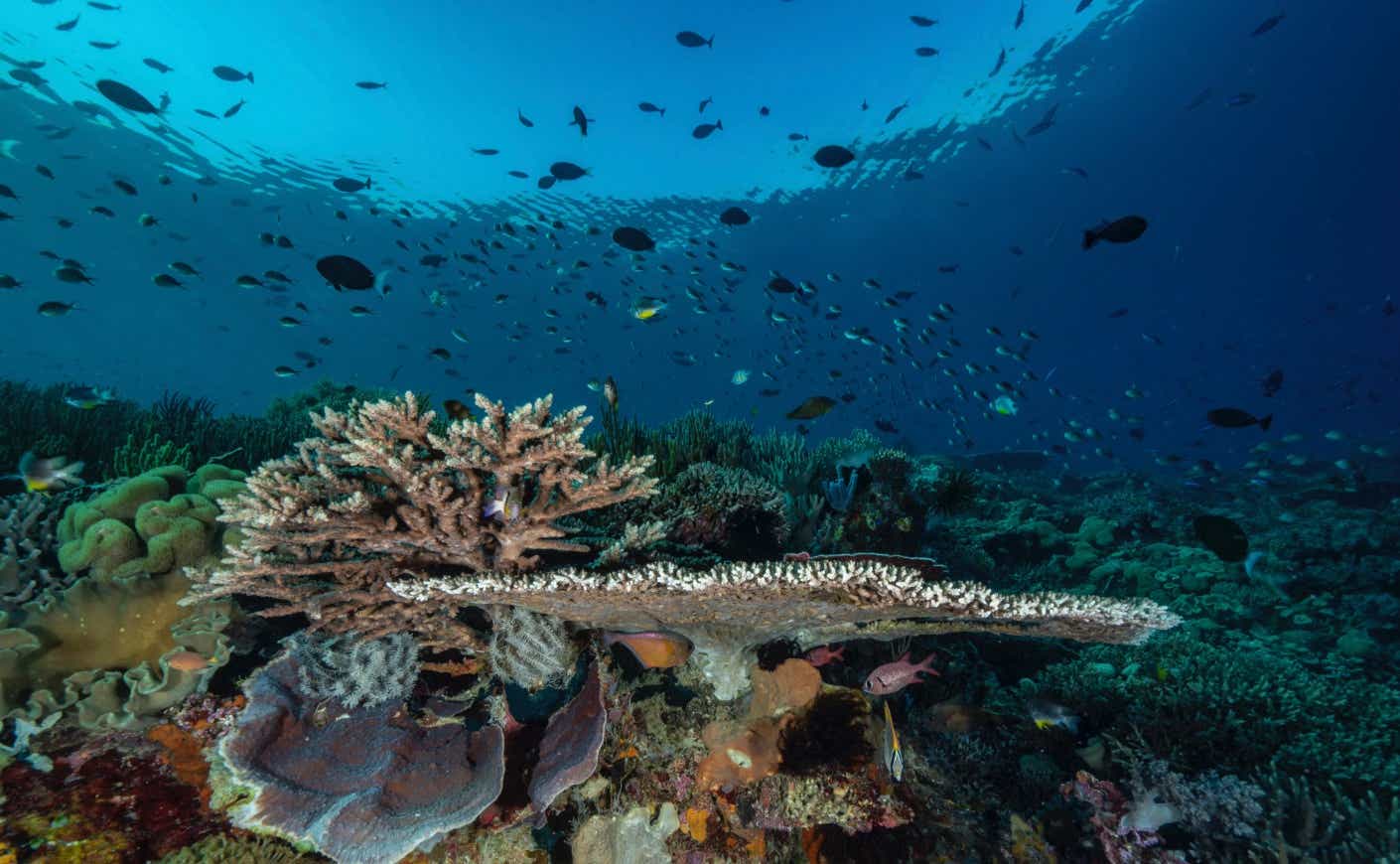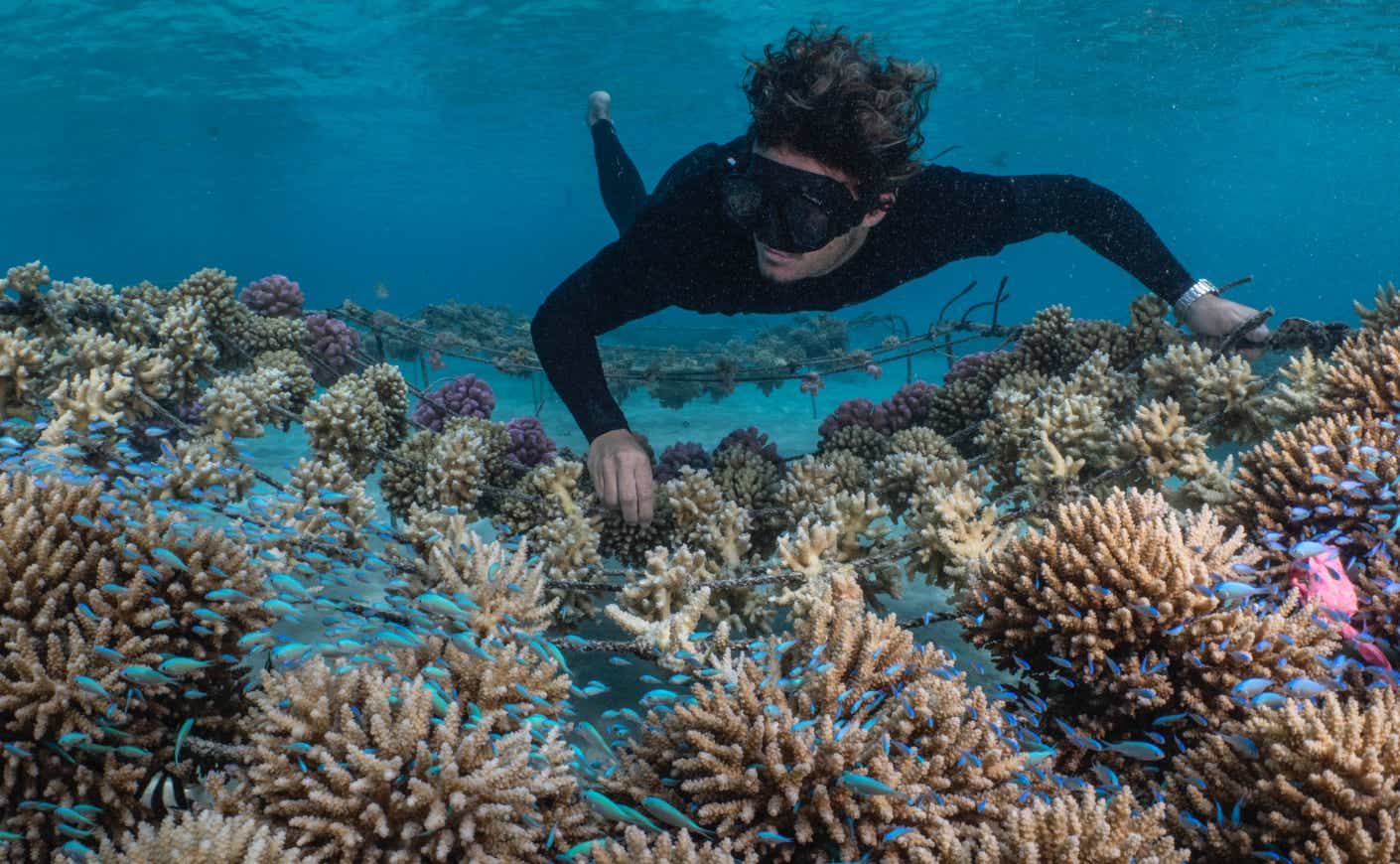The ghostly effects of coral bleaching are expansive and dangerous.
Before I ever saw a living coral, I spent a lot of time reading about these incredible creatures. As a young person living in the confines of a landlocked Mexican town, I poured over pages of National Geographic with colorful photos and dreamed of one day being able to see them for myself.
I also remember the first time I heard about coral bleaching. The year was 1984. I was a university student, and my professors were all talking about the bleaching events that were beginning to happen around the world. This was something we had never seen before.
What is this bleaching, exactly? Although corals are animals, they get their nutrition through photosynthetic algae living in their tissues. During marine heatwaves, this algae becomes toxic and is expelled by the corals. Corals themselves are translucent, with their vivid colors derived from the algae. Once the algae are gone, corals turn white, appearing bleached. Without the algae’s nutrients, the corals begin to starve.

For years now, I’ve been working with scientists from all over the world who are feverishly trying to figure out how to prevent this and restore the reefs that are being degraded. From the audacious discoveries of Dr. Dave Vaughn, who has pioneered coral restoration techniques, to the youthful and infectious enthusiasm of the Coral Gardeners, led by Titouan Bernicot, the incredible surfer, free-diver, and youngest CEO in the conservation world. But it was last summer that I met Dr. Emma Camp, a scientist working in Australia to find what she calls the “super corals” that, for some reason we are yet to understand, are able to survive these warming spells. If we can identify their superpowers, perhaps we can use that to expedite restoration of dying reefs.

Emma recently invited the SeaLegacy team and me to see her work on Heron Island, where she is teaching the next generation of coral scientists. Heron is a small island situated along the Southern Great Barrier Reef, Australia’s most prized UNESCO World Heritage Site. My visit was not to marvel at these once-incredible reefs, but to document the devastating mass bleaching they endured this Austral summer. Emma had expressed concern that her grandchildren might never be able to experience the magic of coral reefs the way she did as a child. But during my visit, we had a wonderful and productive conversation about the importance of coral reefs and why everyone should care if they disappear.
Coral reefs are vital to the health of our planet. They breathe life into their surroundings, drawing in an astounding array of marine life. Coral reef ecosystems make up less than 1 percent of the ocean floor, yet they hold a staggering 25 percent of all marine life — with biological diversity comparable to rainforests. These vibrant underwater structures offer shelter, breeding grounds, and feeding areas for countless species, from tiny crustaceans to large predators like sharks and rays. Coral reefs protect coastal communities from erosion and storm surges and contribute to local economies through tourism and sustainable, artisan fisheries.
All of this is threatened by many including industrial overfishing and pollution. But the greatest threat of all is one that originates in distant lands but affects even the most remote corners of the globe, and that is our fast-warming planet. As the ocean absorbs more and more of the excess heat around Earth, it’s becoming an unlivable environment for delicate creatures like corals, which have been called the “canary in the coal mine” for climate change.

This year’s El Niño saw particularly devastating marine heatwaves around the world, including the Great Barrier Reef, leaving recently vibrant reefs a ghostly white. This isn’t the first time the world has seen mass bleaching events like this: The last 30 years have decimated coral reefs around the world with multiple mass bleaching events. While it’s possible for coral reefs to survive bleaching, these recurring heat waves are making it difficult for them to recover, especially when compounded with the myriad of other threats they face.
Despite those dire threats, there’s hope for corals’ survival and restoration, thanks to the efforts of incredible people like Emma and Titouan. Emma continues to research “super corals” for more resilient reefs. Titouan and the Coral Gardeners are inspiring people to restore damaged reefs around the world. But these efforts will sadly not be enough to save the reefs alone. They will only buy us time to tackle the source: climate change.
You are invited to help SeaLegacy in our mission to hold the world’s governments accountable to drastically reduce emissions before it’s too late. The urgency of the situation cannot be overstated. If we, as a global community, don’t make fundamental changes to reduce our environmental impacts, we are on a trajectory to lose coral reefs entirely.
Learn more about SeaLegacy’s recent expedition to Heron Island and how you can help us save the reefs here — and take a calming journey through the jaw-dropping settings they create in the video below:
Paul Nicklen, Cristina Mittermeier and Andy Mann co-founded SeaLegacy in 2014. SeaLegacy’s mission is to inspire people to fall in love with the ocean, amplify a network of changemakers around the world, and catalyze hands-on diplomacy through hopeful, world-class visual storytelling. For more updates on their meaningful work, learn more about SeaLegacy’s A Sea of Hope series here, and subscribe to Ripple Effect, Katie Couric Media’s sustainability newsletter.








